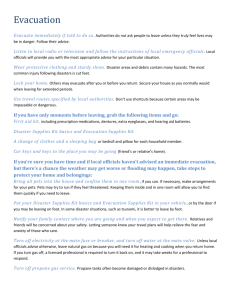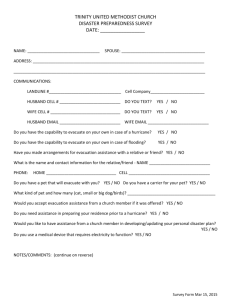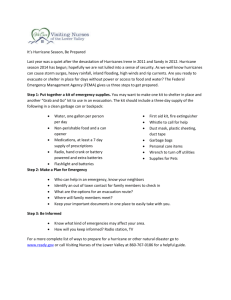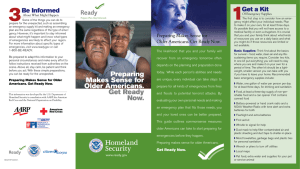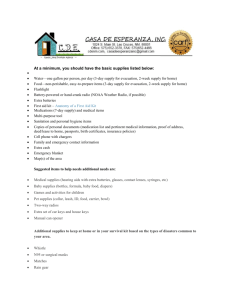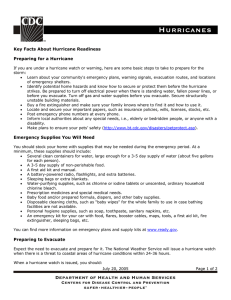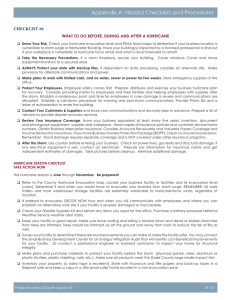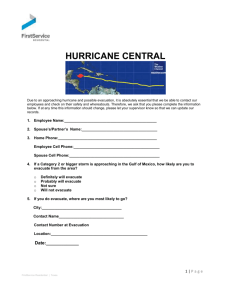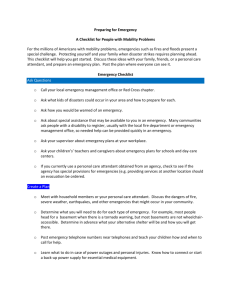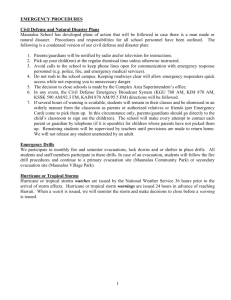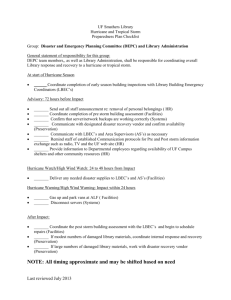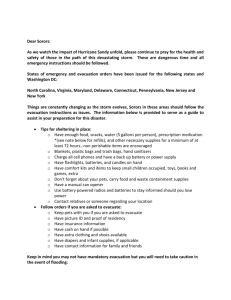Preparation for Hurricane Sandy This is in preparation for possible
advertisement
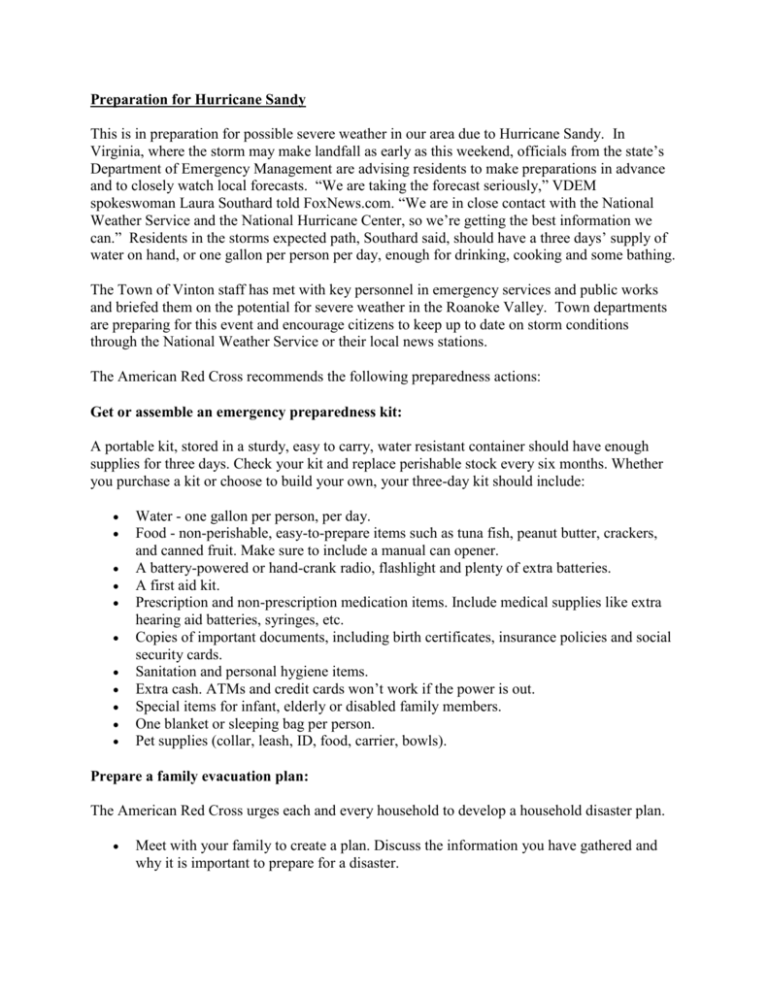
Preparation for Hurricane Sandy This is in preparation for possible severe weather in our area due to Hurricane Sandy. In Virginia, where the storm may make landfall as early as this weekend, officials from the state’s Department of Emergency Management are advising residents to make preparations in advance and to closely watch local forecasts. “We are taking the forecast seriously,” VDEM spokeswoman Laura Southard told FoxNews.com. “We are in close contact with the National Weather Service and the National Hurricane Center, so we’re getting the best information we can.” Residents in the storms expected path, Southard said, should have a three days’ supply of water on hand, or one gallon per person per day, enough for drinking, cooking and some bathing. The Town of Vinton staff has met with key personnel in emergency services and public works and briefed them on the potential for severe weather in the Roanoke Valley. Town departments are preparing for this event and encourage citizens to keep up to date on storm conditions through the National Weather Service or their local news stations. The American Red Cross recommends the following preparedness actions: Get or assemble an emergency preparedness kit: A portable kit, stored in a sturdy, easy to carry, water resistant container should have enough supplies for three days. Check your kit and replace perishable stock every six months. Whether you purchase a kit or choose to build your own, your three-day kit should include: Water - one gallon per person, per day. Food - non-perishable, easy-to-prepare items such as tuna fish, peanut butter, crackers, and canned fruit. Make sure to include a manual can opener. A battery-powered or hand-crank radio, flashlight and plenty of extra batteries. A first aid kit. Prescription and non-prescription medication items. Include medical supplies like extra hearing aid batteries, syringes, etc. Copies of important documents, including birth certificates, insurance policies and social security cards. Sanitation and personal hygiene items. Extra cash. ATMs and credit cards won’t work if the power is out. Special items for infant, elderly or disabled family members. One blanket or sleeping bag per person. Pet supplies (collar, leash, ID, food, carrier, bowls). Prepare a family evacuation plan: The American Red Cross urges each and every household to develop a household disaster plan. Meet with your family to create a plan. Discuss the information you have gathered and why it is important to prepare for a disaster. Identify two meeting places; One right outside your home in case of a sudden emergency, like a fire, and one outside your neighborhood in case you can’t return home. Be sure to make advanced preparations for your pets. Be aware that pets may not be allowed in shelters. Contact hotels, motels, family members and animal shelters to see if they would allow pets in a disaster situation. Keep a contact list of “pet friendly” locations. If you are asked to evacuate, take your pets with you. Choose an out-of-area emergency contact person. During or after a disaster, it’s often easier to call long distance, especially if local phone lines are overloaded or out of service. Family members should call this person and tell them where they are. Everyone must know your emergency contact person’s phone number and email address. Show and explain to each family member how and when to turn off the water and electricity at the main switches. Turn gas off only if instructed by local authorities. Remember, if the gas is shut-off, only a professional can turn it back on. Plan your evacuation route. Use local maps and identify alternate evacuation routes from home, work and/or school. Know where you are going and how you plan to get there before you leave home. Be informed: Find out what types of disaster are likely to occur in your area and how to prepare for each. Find out how local authorities will contact you during a disaster. Listen to local media broadcasts or NOAA Weather Radio for the latest storm conditions and follow the advice of local authorities. If you are told to evacuate, do so immediately. You may choose to evacuate sooner than alerted if you think you may need additional time. Know what to do if a hurricane WATCH is issued: Listen to weather updates (use battery-powered or hand-cranked radio if power is off). Bring in outdoor objects such as lawn furniture, hanging plants, bicycles, toys and garden tools, anchor objects that cannot be brought inside. Close all windows and doors. Cover windows with storm shutters or plywood. If time permits, and you live in an identified surge zone, elevate furniture or move it to a higher floor to protect it from flooding. Fill your vehicle’s gas tank. Check your disaster supplies kit to make sure items have not expired. Know what to do if a hurricane WARNING is issued: Listen to the advice of local officials, and leave if they tell you to do so. If in a manufactured home, check tie-downs and evacuate as told by local authorities. Secure your home by unplugging appliances and turning off electricity and the main water valve. If you are not advised to evacuate, stay inside, away from windows, skylights and glass doors. Do NOT use open flames, such as candles and kerosene lamps, as a source of light. If power is lost, turn off appliances to reduce damage from a power surge when electricity is restored.
